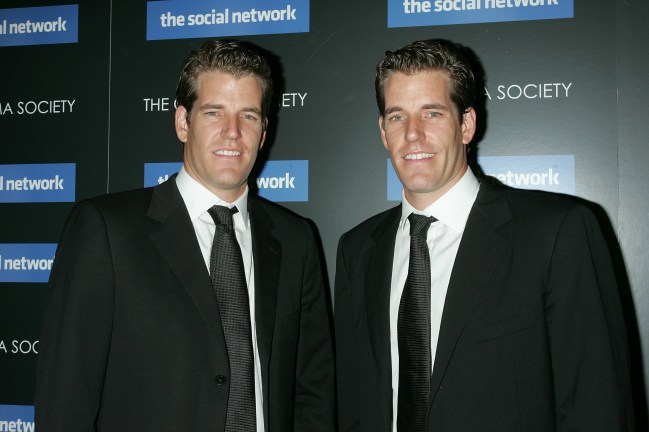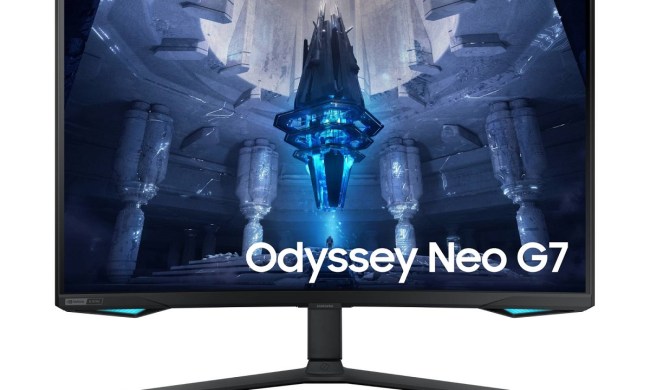
Good news for fans of David Fincher’s The Social Network—a real life sequel may be in the works. But rather than heading to a theater near you, this drama will be played out in the Federal Court of Appeals for the Ninth Circuit.
Perhaps infused with the success and their favorable portrayal in The Social Network (portrayed in the film by Armie Hammer), or perhaps spurred on by the explosive expansion of Facebook, the Winklevoss Twins, Tyler and Cameron, have decided to set aside the original settlement with Facebook and will appeal the amount they were awarded. According to the New York Times, the twins are claiming that Facebook misrepresented the price of its stock in the settlement, robbing them of millions of dollars. Plus, they still want credit for the idea that became Facebook.
In a calculated gamble, the Winklevoss twins along with their Harvard Connect (later renamed ConnectU) partner, Divya Narendra, are attempting to have the initial settlement neutralized, so they can legally pursue Facebook and Zuckerberg again. If they succeed, they stand to receive a much larger payout. If they fail, they will have to surrender the $20 million in cash and $45 million in Facebook shares they received (now worth more than $140 million), which has remained in escrow since the settlement was finalized.
The story is now well documented thanks to the (somewhat fictionalized) movie that was based on the real events, and this new legal battle will continue a fight that has been ongoing since the origins of Facebook—or the origins of the website Harvard Connection—depending on who you believe.
For those that skipped the movie and haven’t been following the years of legal fighting between the Winklevoss twins and Narendra versus Zuckerberg and Facebook, it all began at Harvard, way back in the halcyon days of 2004. It was a simpler time, when Friendster was still a website people had heard of, and cell phones were actually being used to make phone calls. Social networks were still a new idea–even MySpace had only just transitioned from a virtual storage website to a social network–but it was an idea that was ripe for ambitious people with money to invest. And that is where Tyler and Cameron Winklevoss came in.
After toying with the idea of creating a website that would allow Harvard students and alumni to connect with each other online, the twins along with their partner Narendra, hired Mark Zuckerberg to help with the technical side of the website, after their original programmer bowed out due to prior commitments and a heavy school load.
The twins and Narendra hired Zuckerberg after hearing of his technical skills, but none of the three had met him before. After a brief meeting, Zuckerberg agreed to help with the site, but instead of cash, asked for a portion of the company. The actual deal is also a source of legal contention, and will likely be beaten to death once again if the lawsuit is reopened. Regardless of the wording of the agreement, Zuckerberg was given access to the Harvard Connect server, as well as the code.
What happened next is up for debate, and is the primary point of the original lawsuit that the Winklevoss brothers filed against Zuckerberg and Facebook. Initially Zuckerberg claimed that the website would be a simple matter to create. By the time Zuckerberg reached Harvard he had already written several programs, including a precursor to instant messaging that he created for his Dad to talk from home with his dental staff at the office and predated AOL’s instant messenger by a year, and a music program that was so well received that both AOL and Microsoft attempted to buy it and hire Zuckerberg out of high school. He refused them both, kept the music program as freeware and enrolled at Harvard. In short, he had the technical skills to finish the website.
But Zuckerberg began to claim that there were delays, some stemming from his school commitments, and some from the problems he was running into with the existing Harvard Connect code. Soon, Zuckerberg abandoned the Harvard Connect project and shortly afterwards released “The Facebook”. The Winklevoss twins and Narendra claim that Zuckerberg deliberately stalled the Harvard Connect project, partly because he had used their code, and partly to get a jump on a competitor. Zuckerberg claims that the Harvard Connect site was flawed, and The Facebook was just a better idea that took precedence.
The twins believe that the idea for Harvard Connect which became ConnectU was the basis for Facebook, and this is the heart of the ongoing litigation. Narendra has also stated this, and has authorized the new lawsuit, but the Winklevoss brothers are firm and extremely vocal in their stance that Facebook would not exist if not for them. Harvard Connect was a social network that allowed users to become friends with, communicate with, and interact with others, and they believe that without the work they had already down, Zuckerberg would never have been able to create Facebook. They also believe that if Facebook had never been invented, their ConnectU would have filled the same role, and could also have netted over 500 million users. Zuckerberg claims that the site was simply a very limited dating site, and it did not reach the same crowd that he envisioned for Facebook. He also stated that the coding would prove how different they were.
Once The Facebook launched, the twins immediately claimed that Zuckerberg had stolen their idea. They attempted to have the school intervene, but Harvard refused, so lawyers were called in to issue cease and desist orders to The Facebook, which were summarily ignored. The Facebook began to expand at an astounding pace, jumping from college town to college town. Soon Zuckerberg had left Harvard, moved to the Bay Area, and begun to seek funding to make Facebook (the “The” had been dropped at the advice of Zuckerberg’s new advisor, Sean Parker) a national and eventually global website. Then the lawsuits became multi-million dollar law suits.
Zuckerberg’s one time friend and partner Eduardo Saverin joined the Winklevoss twins and Narendra in the legal battles, and much of that is represented in The Social Network. Many of Zuckerberg’s supporters are quick to point out some of the film’s more glaring issues with the story, including the source material (which was taken almost entirely from Saverin). The truth will likely be lost in the gray areas.
After months of legal posturing, the lawsuit was then settled out of court. The actual details of the settlements were sealed, but the numbers have since come to light.
In the settlement, the Winklevoss twins and Narendra were offered $65 million, of which they asked for a portion to be awarded via stock in the company. Although Facebook remains private, Microsoft had made an offer to buy the company five months earlier, and placed the value of the Facebook stock at $35.90 per share, which put the total value of Facebook at $15 billion. Facebook is now valued at $50 billion, which would put the twins current stock holdings at close to $140 million.
The twins claim that Facebook knowingly misrepresented the value of those stocks. A few days before the settlement the Facebook board approved a valuation from an independent company, which valued the stock at $8.88. If this valuation had been used in the settlements instead of Microsoft’s, the stocks given to the Winklevoss would have been worth only $11 million, and the twins would have been due nearly four times as much stock, which today would be close to $500 million.
Facebook claims that the higher estimate of the stocks was agreed upon by both counsels. The lower valuation was available publicly before the settlement was signed, and Facebook claims that it was under no obligation to disclose the new numbers. It also states that the valuation was one of many that both sides were aware of, and thus it was immaterial to the settlement.
The twins have also begun a separate legal battle with their now former lawyers who they fired, citing malpractice, and they also refused to pay the $13 million owed to the lawyers. The matter went to court, where a judge found in favor of the lawyers, but the money is currently in escrow along with the Facebook shares until a decision is reached on the appeal.
But beyond the potential for a bigger payday, the twins also want vindication. A series of emails and instant messages recently came to light, which suggest that Zuckerberg was deliberately stalling on the work for Harvard Connect, and even hacked into the site to make it less useful. More importantly though, in the minds of the Winklevoss twins, it proves that they are the true creators of what would become Facebook. The emails and messages were stored on a hard drive from Zuckerberg’s computer that he used at Harvard, which the twins also claim that the Facebook board new of the messages and deliberately failed to disclose the pertinent information. The contents of the hard drive became public after the initial settlement was signed.
“Mark is where he is because we approached him to include him in our idea.” Tyler Winklevoss told the Times. Both twins are also convinced that ConnectU could have taken the place of Facebook in the world. They give Zuckerberg some credit for “not screwing up”, but both believe that it was the idea and not the man that made Facebook a success.
The Ninth District Appeals Court will hear the arguments to determine if there are grounds to throw out the original settlement, next month.


